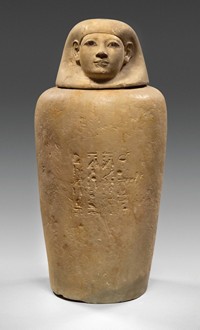Advertisement
Grab your lab coat. Let's get started
Welcome!
Welcome!
Create an account below to get 6 C&EN articles per month, receive newsletters and more - all free.
It seems this is your first time logging in online. Please enter the following information to continue.
As an ACS member you automatically get access to this site. All we need is few more details to create your reading experience.
Not you? Sign in with a different account.
Not you? Sign in with a different account.
ERROR 1
ERROR 1
ERROR 2
ERROR 2
ERROR 2
ERROR 2
ERROR 2
Password and Confirm password must match.
If you have an ACS member number, please enter it here so we can link this account to your membership. (optional)
ERROR 2
ACS values your privacy. By submitting your information, you are gaining access to C&EN and subscribing to our weekly newsletter. We use the information you provide to make your reading experience better, and we will never sell your data to third party members.
Environment
Newscripts
Intoxicated Metals, Hangover Relief, Prehistoric Reptile Skin
by Jeff Huber
April 18, 2011
| A version of this story appeared in
Volume 89, Issue 16

In what appears to be an attempt to give new meaning to the word “buzzed,” Japanese researchers have determined that alcoholic beverages can actually enhance the SUPERCONDUCTIVE PROPERTIES of an iron-based material (Supercond. Sci. Technol., DOI: 10.1088/0953-2048/ 24/5/055008). The research team, from Japan’s National Institute for Materials Science, reached this conclusion after placing the compound FeTe0.8S0.2 in a series of water and ethanol mixtures as well as in another set of alcoholic beverages such as beer, wine, sake, and Suntory Yamazaki Single Malt Whisky. Each group of liquids was then kept at 70 °C for a day before the conductivity of their metallic contents was measured.
“Surprisingly, the superconducting diamagnetic signals of all the samples heated in alcoholic beverages were clearly larger than that of the samples heated in the water-ethanol mixtures, indicating that the alcoholic beverages are much more effective for the evolution of superconductivity,” the team writes.
The researchers hypothesize that oxygen released by the alcoholic beverages could be the reason for the beverages’ superior ability to induce conductivity in FeTe0.8S0.2. They add, however, that further research be done concerning the structure and composition of fermented libations. Unfortunately, the researchers fail to disclose at which bar these studies will occur.
Scientists staying up into the late hours of the night to conduct their own intensive alcohol research might want to consider eating a breakfast of toast with honey or golden syrup (aka pale treacle) the following morning. According to an advisory that the Royal Society of Chemistry releases during the yearend holiday season, these common pantry items are actually “the ideal way to COMBAT A HANGOVER.” RSC’s advice is based on the reasoning of society member John Emsley, author of “The Consumer’s Good Chemical Guide.”
The feeling of nausea and headache that accompany a night of drinking are the result of the body turning alcohol into the toxic chemical acetaldehyde, Emsley explains. In time, the body breaks acetaldehyde down into less toxic substances, but this process leaves it malnourished. That’s where a breakfast of honey- or syrup-glazed toast can come in and supply the body with essential fructose, potassium, and sodium, RSC advises.
“I use the remedy a lot and have found it works well, with fast relief,” RSC Media Relations Manager Brian Emsley—no relation to John—confides to Newscripts.
Hangover remedies might help us live to enjoy another night, but they pale in comparison to the self-preservation technique demonstrated by a fossilized 50 million-year-old REPTILE SKIN discovered in the sedimentary basins of northeastern Utah. The remarkably intact fossil was examined by a team of researchers, including Roy A. Wogelius, a geochemist at the University of Manchester, in England, with nondestructive Fourier transform infrared mapping (Proc. R. Soc. B, DOI: 10.1098/rspb.2011.0135). The researchers found sulfur- and amide-based compounds within the fossil that were not present to the same degree in the surrounding geological sediment and organic matter. From this they concluded that the compounds detected were remnants of the β-keratin that once composed the reptile’s skin.
To explain this unlikely preservation, Wogelius hypothesizes that “the breakdown products of keratin may form complexes that anchor the products to the underlying sediment, keeping the organics from being washed away and probably guarding them from further breakdown.”
Wogelius tells Newscripts that the infrared mapping technique used by his team is revolutionary in that it maintains the integrity of the skin sample tested and thus “opens up enormous possibilities for future work.”






Join the conversation
Contact the reporter
Submit a Letter to the Editor for publication
Engage with us on Twitter